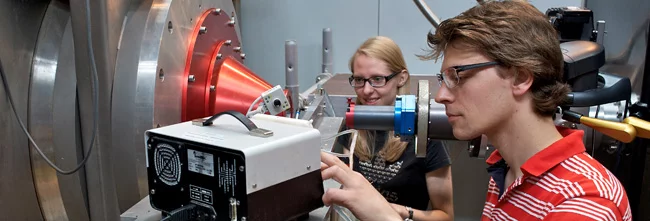
SANS-I: Small Angle Neutron Scattering Instrument
Small angle neutron scattering (SANS) is an ideal tool for studying the structure of materials in the mesoscopic size range between 1 and about 400 nm. Imaging methods such as transmission electron microscopy (TEM) also have this capability to resolve inhomogenities of this length scale. They provide images in real space, for instance pictures of individual grains in a nanocrystalline material.
SANS on the other hand is a non-destructive method providing structural information averaged over all grains of different size with high statistical accuracy due to averaging over the whole sample volume. Often an average description of the sample is precisely what the experimentalists need: for instance, the granularity of a catalystis is described directly by SANS as an average value and there is no need to visualize each individual particle.
Using neutrons as probing particles has the advantage of being sensitive to magnetic spins, allowing to resolve magnetic structures, and also to light elements, in particular hydrogen/deuterium which remain invisible in TEM and x-ray small angle scattering. The last property is crucial for many applications in biology and polymer research.
Applications of SANS
- biological molecules: proteins, ribosomes, DNA, etc.
- polymers: molecules, chains, blends and mixtures
- surface properties of catalysts
- colloidal suspensions
- metal physics: phase stability of alloys, precipitates, interfaces, grain boundaries
- materials science: structural tailoring and testing, stability under load
- nanocrystalline materials: grain size, interface, porosity, magnetic nanostructures
- long range spin correlation
- flux lines in superconductors